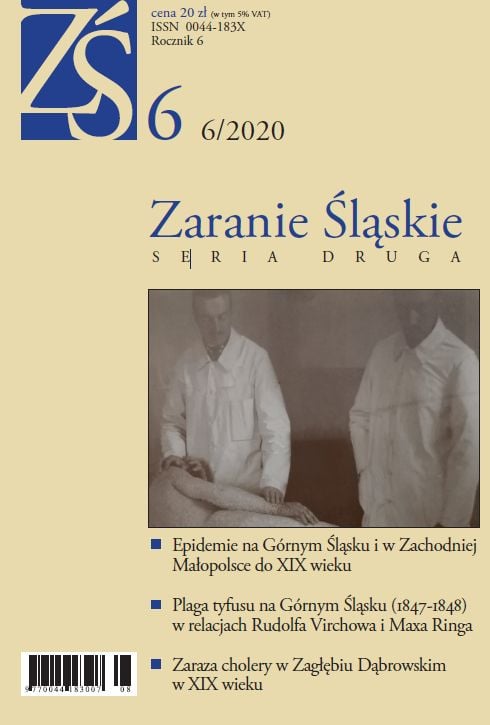Infectious Diseases and Epidemics in Upper Silesia and Western Lesser Poland until the Beginnings of the 16th Century
Abstract
The earliest accounts on epidemics in Silesia are mentioned in the 12th and 13th
century records. More precise data is only provided by Kronika Raciborska (The
Racibórz Chronicle) in the entry of 1318. The Black Death, which decimated the
population of Western Europe in the mid-14th century and which was introduced
in Silesia and Central Europe by groups of Hungarian flagellants, did not have
such a devastating impact on this part of the continent. It was only in 1413 that the
pandemic reached Silesia, ravaging Wrocław and Świdnica. Upper Silesia was first
affected by a large-scale epidemic in 1425, when the disease was imported from
Cracow. The following years saw regular disasters bulldozing their way across the
territories of Upper Silesia and adjacent western regions of Lesser Poland. The 1452
outbreak was especially devastating, bringing destruction and death, including
the death of Nicholas, Duke of Racibórz and Rybnik, and – allegedly – of Bolesław,
Duke of Cieszyn. The 1460s epidemic, preceded – according to the account of Jan
Długosz – by an unusually mild and snowless winter – proved incredibly fierce.
The next outbreaks happened in 1474.1483 and 1496. The 16th century did not bring
any improvements. Every few years, recurring outbreaks of – most frequently – the
plague, also known as pester pestilence, thrived along the Silesia – Lesser Poland
border. Epidemics of infectious diseases usually started in the third quarter of the
year and disappeared during the winter, low temperatures being their worst enemy.
Despite the lack of effective medicines, efforts were made to minimize the loss of
life and prevent the pestilence from spreading. The infected people were isolated
and their houses were marked with paint, the dead were buried immediately out-
side the city walls, offices – including judiciary offices – were suspended their ser-
vices, and schools, public baths and inns were closed down.
Downloads
Published
Issue
Section
License

This work is licensed under a Creative Commons Attribution-NonCommercial-NoDerivatives 4.0 International License.
Since transitioning to a digital format, the journal has been operating under open access, meaning all content is freely available to users and institutions.
In issue 8 (2022), published articles are licensed under the Attribution 4.0 International (CC BY 4.0) license.
The full license text is available at: https://creativecommons.org/licenses/by/4.0/legalcode.
Since issue 9 (2023), published articles are licensed under the Attribution-NonCommercial-NoDerivatives 4.0 International (CC BY-NC-ND 4.0) license.
The full license text is available at: https://creativecommons.org/licenses/by-nc-nd/4.0/legalcode.pl.



